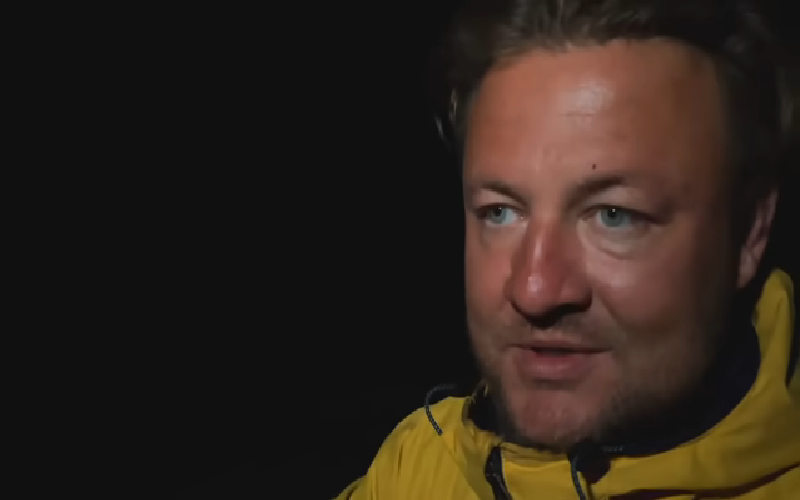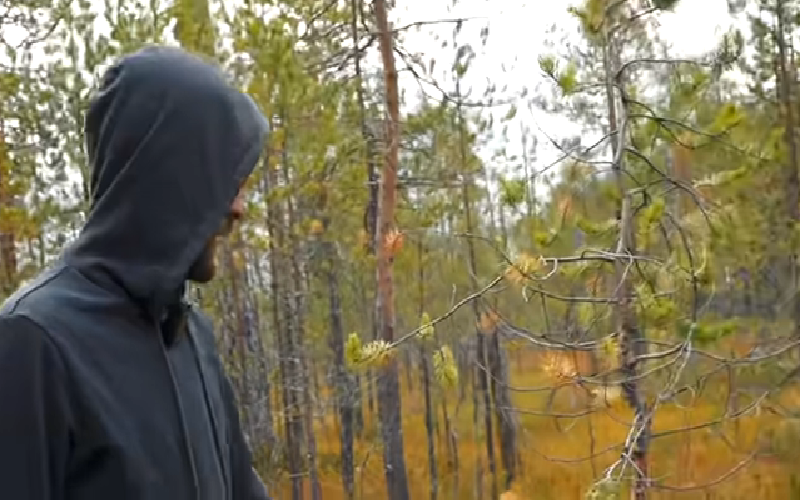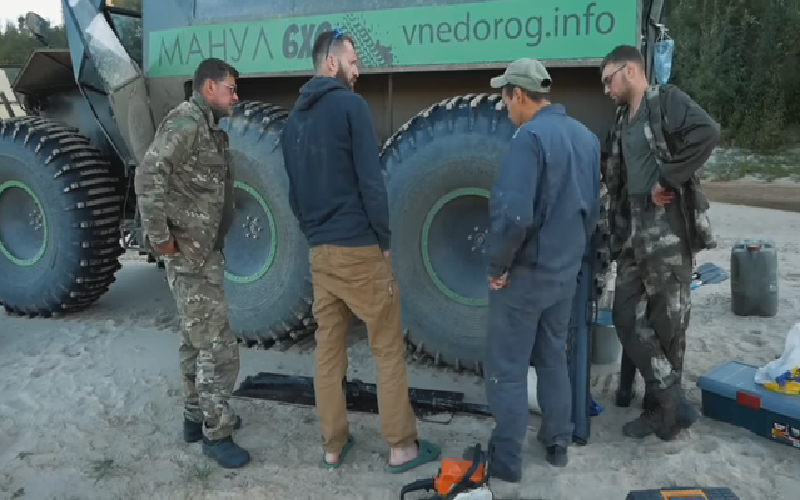Good afternoon!
For all my love of travel, even in the non-viral time in the summer I prefer to stay at home: I really love my garden. And when the first polycarbonate greenhouses appeared on sale in our area, we bought ourselves one of the first in the village.
At that time, we had already decided that we would build a greenhouse in the form of a small house made of foam blocks, but only with very large windows on all 4 sides. And with a small stove. And they even filled in a shallow foundation 3×6 m. But they saw a polycarbonate greenhouse — and bought it. It was the husband’s decision. It was easier for him to buy and assemble such a greenhouse than to bother with construction.
With huge metal studs (I don’t know what they are called), a larch beam was attached to the concrete foundation around the perimeter. And already on this wooden base, a “skeleton” was put up from a fairly rigid and durable metal profile. polycarbonate was attached to the «skeleton», according to the instructions.
Our greenhouse lasted five years. The picture shows thick curtains from the sun on the south side. Photo from personal archive. Our greenhouse lasted five years. The picture shows thick curtains from the sun on the south side. Photo from personal archive.
The instructions said that polycarbonate maintains a positive temperature in the greenhouse at an outdoor temperature of at least 6 degrees. This is at night or in cloudy weather. When the greenhouse was installed, I hung a thermometer in it and compared the night readings of the thermometers inside and outside: it is, the difference is 5-6 degrees.
First trouble
Our Altai climate is sharply continental, and even with a large “run-up” of night and day temperatures. If, for example, at the end of March-beginning of April it was plus 15 during the day, then at night it may well be minus 10. That is, one cannot do without heating the greenhouse. We bought an infrared lamp with a power of 1 kilowatt per hour. And in the first spring everything went well. We survived frosts down to minus 10-12 degrees.
But after the frosts, the sun burned during the day, and the temperature from the night pole 5-10 (this is thanks to the lamp, otherwise everything would be frozen) rose to plus forty. It is clear that such a temperature variation did not benefit the plants. And we constantly ran during the day to open the windows. As soon as the sun went down — it got colder, we ran to close the windows, turn on the lamp.
So, the first minus is that the greenhouse exacerbates the already too large difference between day and night temperatures, and this depresses the plants. Yes, and electricity costs a pretty penny. Cucumbers, radishes and early basil with dill are no cheaper than purchased ones.
second trouble
When the first frosts began in autumn, we began to turn on the lamp at night in order to preserve tomatoes and eggplants in September, which were still ripening on the bushes. But one night the electricity went out. We got up in the morning, went to the greenhouse, and there … everything was frozen … Here is the lamp for you …
The following spring, they installed a thermofor stove. Well, I’ll tell you, it’s such a pleasure to get up at 3 o’clock at night, go to throw firewood into the stove. Because the evening bookmark was enough for 3-4 hours, and then everything cooled down.
In this mode, you will not want any early cucumbers. And once I threw firewood into the stove, and take it and do not flare up … Most of the plants ordered to live long …
Trouble third
In the summer in the greenhouse, despite the open windows, the heat is unbearable. Tomatoes twist the leaves into a tube, cucumbers die. I had to go out of my way: sew thick curtains on the south side, and whitewash the southern slope of the roof from the inside.
Trouble four
The land in the greenhouse quickly dries up and depletes. In winter, I constantly opened the door and threw snow there, it melted during the day, moistened the ground, but this was not enough. In addition, each spring began with the fact that we drove humus in a wheelbarrow over the muddy, barely thawed earth to the greenhouse.
Trouble fifth
Whitefly! Infection! Very hard to beat! VERY!
Trouble six
Sometimes we have very snowy winters and the greenhouse has to be constantly cleared of snow. Otherwise, she will be crushed. Last winter, when, it seems, all the Russian snow fell, the neighbors cleaned and cleaned, as if they were saving us. And in winter, the snowfall intensified, and in the morning they looked out into the street, and the greenhouse was soft-boiled!
The seventh trouble is for us the final, final
The polycarbonate construction is flimsy and cannot withstand our winds. How many of these greenhouses have flown away, become mutilated in recent years in the village!
A few years ago, my husband and I went to the city on business in mid-May. Suddenly, an Armenian neighbor calls and, worried, says (and when he gets worried, he has a very strong accent): “Sashkam (I mean Sasha), brother, are you in the village? Nat? You know, we have a very strong wind here, your greenhouse is lamait! Wah, savsem broke!
Well, well, since I broke it, I broke it! Having finished the work, we return home and see this:
Our greenhouse crushed by the wind. 2015 Purchased and installed in 2010. Photo from personal archive. Our greenhouse crushed by the wind. 2015 Purchased and installed in 2010. Photo from personal archive.
As you can see, the greenhouse could not be blown away by the wind, as it was securely fixed. But still, the blow was so strong that the larch frame of the greenhouse was pulled off the foundation. And the metal furnace inside overturned.
This greenhouse could no longer be restored, we dismantled it.
Alternative to polycarbonate greenhouse
Using the remnants of polycarbonate, my husband made me a couple of beds with covers. This is the topic! Such beds allow you to get greens, radishes, cucumbers and zucchini in early June. In Siberia!
At night and on cool days, we keep the beds closed. It gets warm — open the lid slightly. The sun is shining — we open it completely. If there is a threat of frost at night, I cover it with old fur coats over the lid (they can be seen in the photo, hanging on a support for grapes).
In our climate, such beds turned out to be more practical and more convenient than polycarbonate greenhouses. Photo from personal archive. In our climate, such beds turned out to be more practical and more convenient than polycarbonate greenhouses. Photo from personal archive.
Lids are removable. When the weather settles and there is no longer any need for the lids, the husband twists them (they are on piano hinges) and puts them in the shed. Until next spring.
By the next season, he promised to make me beds with high sides — for tomatoes, eggplants and peppers.
It has been 5 years since our greenhouse was destroyed by an unexpected gust of wind. During these five years, we could have bought and installed a new greenhouse five times already, but we did not. Have played enough. With a polycarbonate greenhouse in our climate of hemorrhoids, the hassle and costs are much greater than the benefits and benefits.
Now we regret that we did not build, as originally planned, a foam block greenhouse with large windows. Perhaps this plan is still feasible. In the meantime, we are quite satisfied with the beds with polycarbonate removable covers. For our climate, this is a great solution.
Do you have experience with polycarbonate greenhouses?




